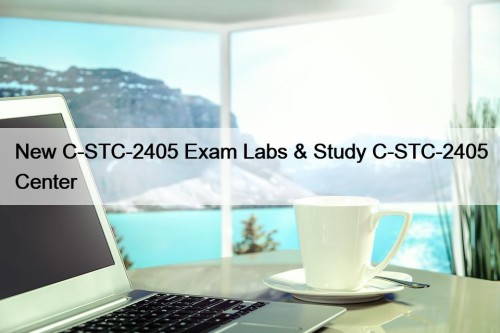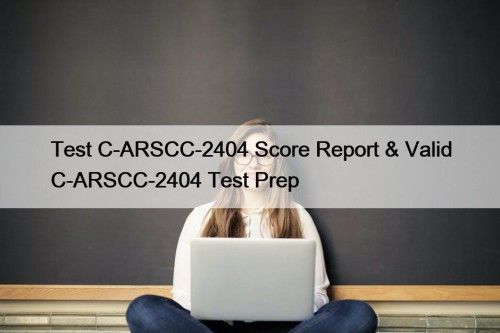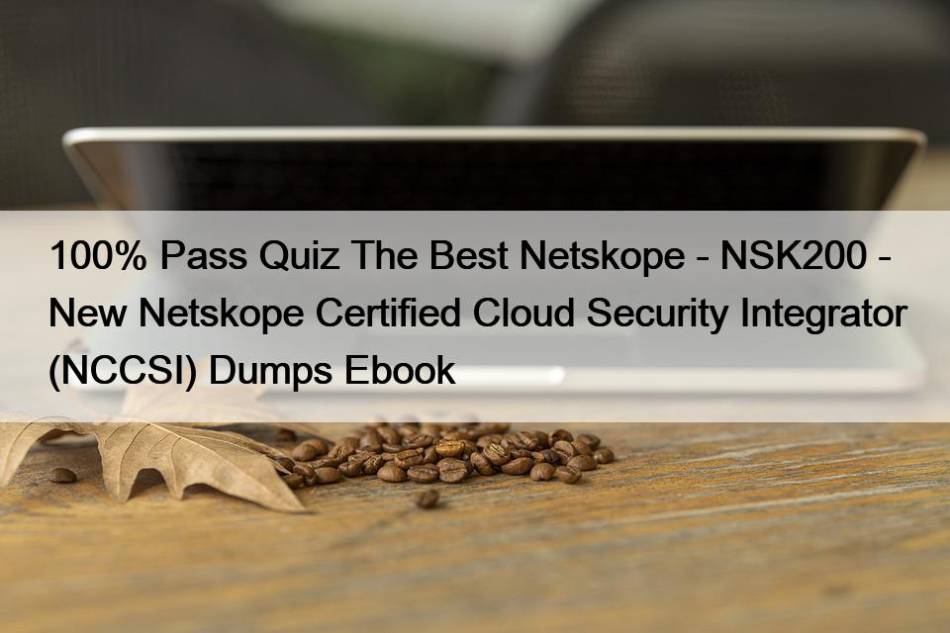Most Popular
 New C-STC-2405 Exam Labs & Study C-STC-2405 Center
New C-STC-2405 Exam Labs & Study C-STC-2405 Center
The valid updated, and real SAP C-STC-2405 PDF questions and ...
 Intereactive CFA-001 Testing Engine & CFA-001 Reliable Exam Testking
Intereactive CFA-001 Testing Engine & CFA-001 Reliable Exam Testking
GAQM CFA-001 certification exam is among those popular IT certifications. ...
 Test C-ARSCC-2404 Score Report & Valid C-ARSCC-2404 Test Prep
Test C-ARSCC-2404 Score Report & Valid C-ARSCC-2404 Test Prep
P.S. Free 2025 SAP C-ARSCC-2404 dumps are available on Google ...



100% Pass Quiz The Best Netskope - NSK200 - New Netskope Certified Cloud Security Integrator (NCCSI) Dumps Ebook

BTW, DOWNLOAD part of Exam4PDF NSK200 dumps from Cloud Storage: https://drive.google.com/open?id=1TyZlVq9RZRyPaLf7KjmmRn0efeD5mpC7
Our company aimed to provide you with professional team, high quality service and reasonable price on our NSK200 exam questions. In order to help most customers solve their problems, our company always insist on putting them first and providing valued service on our NSK200 training braindump. It has helped so many candidates passed their NSK200 exam. We deeply believe that the NSK200 test torrent of our company will help you pass the NSK200 exam and get your certification successfully in a short time too.
Netskope NSK200 Exam Syllabus Topics:
| Topic | Details |
|---|---|
| Topic 1 |
|
| Topic 2 |
|
| Topic 3 |
|
| Topic 4 |
|
| Topic 5 |
|
100% Pass Netskope - The Best NSK200 - New Netskope Certified Cloud Security Integrator (NCCSI) Dumps Ebook
The Exam4PDF is a trusted and reliable platform that has been helping the Netskope Certified Cloud Security Integrator (NCCSI) (NSK200) certification exam candidates for many years. Over this long time period, the NSK200 Exam Practice questions have helped the NSK200 exam candidates in their preparation and enabled them to pass the challenging exam on the first attempt.
Netskope Certified Cloud Security Integrator (NCCSI) Sample Questions (Q35-Q40):
NEW QUESTION # 35
You are using the Netskope DLP solution. You notice flies containing test data for credit cards are not triggering DLP events when uploaded to Dropbox. There are corresponding page events. Which two scenarios would cause this behavior? (Choose two.)
- A. The credit card numbers in your test data are Invalid 16-dlglt numbers.
- B. There is no API protection configured for Dropbox.
- C. The DLP rule has the severity threshold set to a value higher than the number of occurrences.
- D. The Netskope client Is not steering Dropbox traffic.
Answer: A,C
Explanation:
There are two possible scenarios that would cause the behavior of files containing test data for credit cards not triggering DLP events when uploaded to Dropbox. One scenario is that the DLP rule has the severity threshold set to a value higher than the number of occurrences. This means that the rule will only trigger an event if the number of matches for the sensitive data exceeds the specified threshold. For example, if the rule has a severity threshold of 10 and the file contains only 5 credit card numbers, then no event will be generated. To fix this, you can lower the severity threshold or remove it altogether. The other scenario is that the credit card numbers in your test data are invalid 16-digit numbers. This means that the numbers do not pass the Luhn algorithm check, which is a validation method used by Netskope DLP to detect valid credit card numbers. For example, if the number is 1234-5678-9012-3456, then it is not a valid credit card number and will not be detected by Netskope DLP. To fix this, you can use valid test credit card numbers that pass the Luhn algorithm check. The other options are not valid scenarios for this behavior. The Netskope client is not steering Dropbox traffic is not a valid scenario because there are corresponding page events, which means that the traffic is being steered to Netskope. There is no API protection configured for Dropbox is not a valid scenario because API protection is not required for DLP detection on file uploads, which are handled by real- time protection. References: DLP Rule Settings1, Credit Card Number Detection2
NEW QUESTION # 36
You are using the Netskope DLP solution. You notice that valid credit card numbers in a file that you just uploaded to an unsanctioned cloud storage solution are not triggering a policy violation. You can see the Skope IT application events for this traffic but no DLP alerts.
Which statement is correct in this scenario?
- A. Netskope client is not enabled.
- B. Netskope client is enabled, but API protection for the SaaS application is not configured.
- C. Credit card numbers are entered with a space or dash separator and not as a 16-digit consecutive number.
- D. You have set the severity threshold to a higher value.
Answer: C
Explanation:
Explanation
The statement that is correct in this scenario is D. Credit card numbers are entered with a space or dash separator and not as a 16-digit consecutive number. This is one of the possible reasons why valid credit card numbers in a file are not triggering a policy violation by Netskope DLP. Netskope DLP uses data identifiers to detect sensitive data in files and network traffic. Data identifiers are predefined or custom rules that match data patterns based on regular expressions, checksums, keywords, etc1. The credit card number data identifier matches 16-digit consecutive numbers that pass the Luhn algorithm check2. If the credit card numbers are entered with a space or dash separator, such as 1234-5678-9012-3456 or 1234 5678 9012 3456, they will not match the data identifier and will not trigger a policy violation. To solve this problem, you can either remove the separators from the credit card numbers or create a custom data identifier that matches the credit card numbers with separators3. Therefore, option D is correct and the other options are incorrect. References: Data Identifiers - Netskope Knowledge Portal, Credit Card Number - Netskope Knowledge Portal, Create a Custom Data Identifier - Netskope Knowledge Portal
NEW QUESTION # 37
Your team is asked to investigate ten Netskope DLP incidents. You want to assign these incidents among different team members.
- A. Use the Forensic Incident workflow.
- B. Use the Quarantine Incident workflow.
- C. Use your ticketing tool.
- D. Use the DLP Incident workflow.
Answer: D
Explanation:
The DLP Incident workflow in Netskope is specifically designed for managing and investigating DLP incidents. This workflow allows incidents to be assigned to team members, facilitating efficient investigation and resolution of data loss concerns.
NEW QUESTION # 38
Review the exhibit.
A security analyst needs to create a report to view the top five categories of unsanctioned applications accessed in the last 90 days. Referring to the exhibit, what are two data collections in Advanced Analytics that would be used to create this report? (Choose two.)
- A. Network Events
- B. Application Events
- C. Page Events
- D. Alerts
Answer: A,B
Explanation:
To create a report to view the top five categories of unsanctioned applications accessed in the last 90 days, the security analyst would need to use two data collections in Advanced Analytics: Application Events and Network Events. Application Events provide information about the cloud applications and websites accessed by users, such as app name, app category, app risk score, app instance, app version, and more. Network Events provide information about the network traffic generated by users, such as source IP, destination IP, protocol, port, bytes sent, bytes received, and more. By combining these two data collections, the security analyst can filter the events by app category, app risk score, and time range to create a report that shows the top five categories of unsanctioned applications accessed in the last 90 days. Alerts and Page Events are not relevant for this report. Alerts provide information about the alerts triggered by Real-time Protection or API Data Protection policies, such as alert type, alert severity, alert status, alert description, and more. Page Events provide information about the web pages visited by users, such as page title, page URL, page category, page risk score, page content type, and more. References: Advanced Analytics
NEW QUESTION # 39
Your organization has three main locations with 30.000 hosts in each location. You are planning to deploy Netskope using iPsec tunnels for security.
What are two considerations to make a successful connection in this scenario? (Choose two.)
- A. redundant POPs
- B. number of hosts
- C. operating systems
- D. browsers in use
Answer: A,B
Explanation:
To deploy Netskope using IPSec tunnels for security in this scenario, two considerations to make a successful connection are C. redundant POPs and D. number of hosts. Redundant POPs are Points of Presence that are geographically distributed data centers that host the Netskope cloud platform. You need to consider redundant POPs to ensure high availability and resiliency of your IPSec tunnels in case of a failure or outage in one of the POPs. You can configure multiple IPSec tunnels from your network to different POPs and use dynamic routing protocols such as BGP to load balance and failover the traffic1. Number of hosts is the number of devices or endpoints that will use the IPSec tunnels to access the cloud services. You need to consider the number of hosts to estimate the bandwidth and throughput requirements of your IPSec tunnels and choose the appropriate POPs that can handle the traffic volume. You can use the Netskope Bandwidth Calculator tool to estimate the bandwidth and throughput based on the number of hosts, locations, and cloud services2.
Therefore, options C and D are correct and the other options are incorrect. References: IPSec - Netskope Knowledge Portal, Netskope Bandwidth Calculator
NEW QUESTION # 40
......
For candidates who will attend the exam, some practice is quite necessary. Our NSK200 training materials contain both questions and answers, and you can have a quickly check after practicing. NSK200 training materials cover most knowledge points for the exam, and you can have a good command of the exam if you choose us. Besides, in the process of ing, you professional ability will also be improved. We offer you free update for 365 days if you buying NSK200 Exam Dumps from us. And the latest version will be sent to your email automatically.
Valid Dumps NSK200 Files: https://www.exam4pdf.com/NSK200-dumps-torrent.html
- 100% Pass Quiz Netskope - Unparalleled NSK200 - New Netskope Certified Cloud Security Integrator (NCCSI) Dumps Ebook 🍣 Open website ➡ www.examdiscuss.com ️⬅️ and search for 「 NSK200 」 for free download 🔁Latest NSK200 Exam Discount
- High-quality New NSK200 Dumps Ebook - Leading Offer in Qualification Exams - Trustworthy Netskope Netskope Certified Cloud Security Integrator (NCCSI) 🥚 Open ➽ www.pdfvce.com 🢪 and search for ➡ NSK200 ️⬅️ to download exam materials for free 🍈Valid NSK200 Exam Review
- NSK200 Exam Torrent 😱 Latest NSK200 Exam Discount 😢 NSK200 Valid Exam Cram 🍵 Download ➤ NSK200 ⮘ for free by simply entering 《 www.real4dumps.com 》 website 🔐Latest NSK200 Exam Discount
- Netskope NSK200 Online Practice Test Engine Recommendation 🤗 Search for ⇛ NSK200 ⇚ and easily obtain a free download on ☀ www.pdfvce.com ️☀️ 📐NSK200 Reliable Exam Pdf
- Latest NSK200 Exam Discount 🐷 NSK200 Reliable Exam Pdf 💳 NSK200 Frenquent Update 🍆 Copy URL 《 www.prep4sures.top 》 open and search for ▷ NSK200 ◁ to download for free 🛅Latest NSK200 Exam Discount
- New NSK200 Dumps Ebook - 100% Pass Quiz 2025 Netskope NSK200: First-grade Valid Dumps Netskope Certified Cloud Security Integrator (NCCSI) Files ⬜ Immediately open ➡ www.pdfvce.com ️⬅️ and search for “ NSK200 ” to obtain a free download 📂NSK200 Frenquent Update
- Get Professional New NSK200 Dumps Ebook and Pass Exam in First Attempt 🦇 Open ⮆ www.real4dumps.com ⮄ enter ⮆ NSK200 ⮄ and obtain a free download 🌿Reliable NSK200 Exam Sample
- NSK200 Latest Study Questions 💔 Exam NSK200 Book 🪒 NSK200 Latest Exam Online ⬅️ Search for ▛ NSK200 ▟ and download it for free on 【 www.pdfvce.com 】 website 🎃Examcollection NSK200 Free Dumps
- Netskope NSK200 Online Practice Test Engine Recommendation 💉 Easily obtain free download of { NSK200 } by searching on ➤ www.dumpsquestion.com ⮘ 🐀NSK200 Latest Exam Online
- NSK200 Valid Exam Cram 🃏 Latest NSK200 Exam Discount 🐭 Latest NSK200 Exam Discount 🥋 Easily obtain ➥ NSK200 🡄 for free download through ▷ www.pdfvce.com ◁ 〰Exam NSK200 Book
- Latest NSK200 Exam Review 🃏 Reliable NSK200 Exam Sample 😉 Valid NSK200 Exam Review 🚇 Enter ⇛ www.real4dumps.com ⇚ and search for ➥ NSK200 🡄 to download for free 🎧Free NSK200 Braindumps
- NSK200 Exam Questions
- lifespaned.com startingedu.com thespaceacademy.in xt.808619.com chaceacademy.com unikaushal.futurefacetech.in zahitech.com setainstitute.tech watch.hyperwatching.com priceactioninstitution.com
What's more, part of that Exam4PDF NSK200 dumps now are free: https://drive.google.com/open?id=1TyZlVq9RZRyPaLf7KjmmRn0efeD5mpC7
Tags: New NSK200 Dumps Ebook, Valid Dumps NSK200 Files, Valid Test NSK200 Braindumps, Latest NSK200 Braindumps Free, NSK200 Reliable Learning Materials